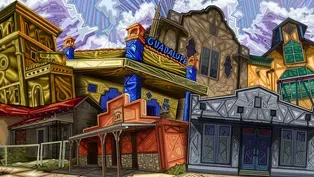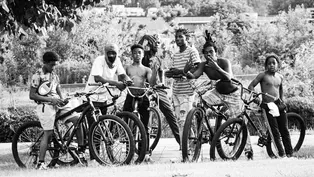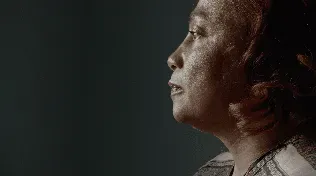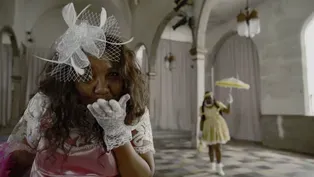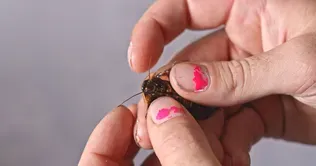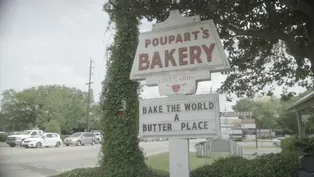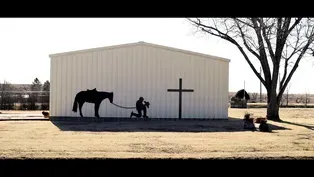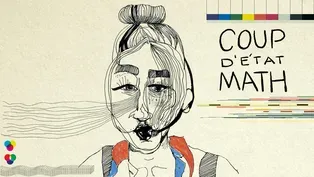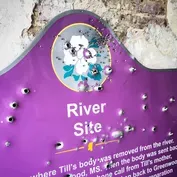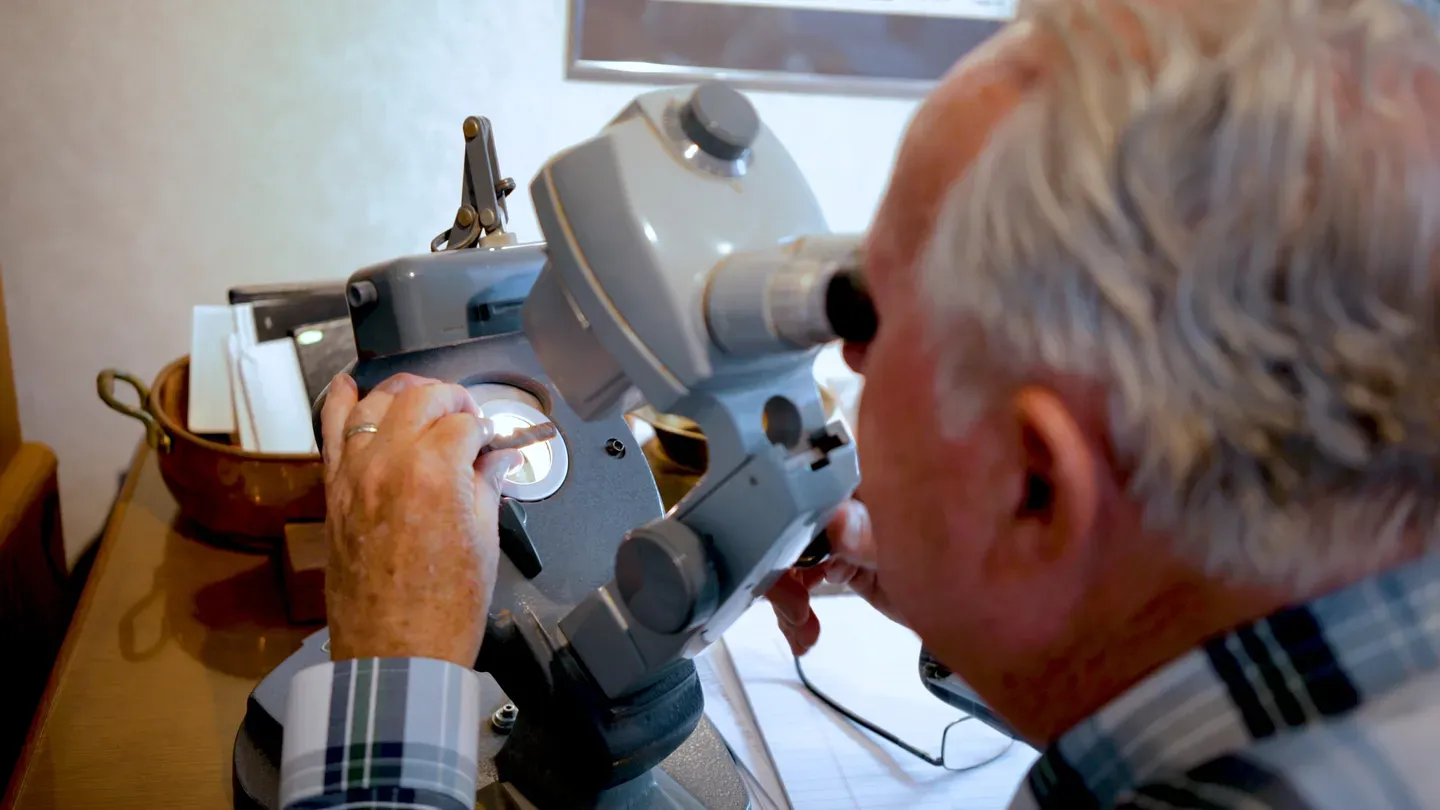

History in Pieces
Special | 5m 4sVideo has Closed Captions
Kent Westbrook's passion collecting ancient relics showcases the history or Arkansas.
Some people collect baseball cards or coins. For Kent Westbrook, he actively collects tools, bowls, pots, and more made in Arkansas. His simple hobby spans over 65 years and slowly developed into an expansive catalogue featured at different art museums memorializing Arkansan history.
Problems with Closed Captions? Closed Captioning Feedback
Problems with Closed Captions? Closed Captioning Feedback
Support for Reel South is made possible by the National Endowment for the Arts, the Center for Asian American Media and by SouthArts.

History in Pieces
Special | 5m 4sVideo has Closed Captions
Some people collect baseball cards or coins. For Kent Westbrook, he actively collects tools, bowls, pots, and more made in Arkansas. His simple hobby spans over 65 years and slowly developed into an expansive catalogue featured at different art museums memorializing Arkansan history.
Problems with Closed Captions? Closed Captioning Feedback
How to Watch REEL SOUTH
REEL SOUTH is available to stream on pbs.org and the free PBS App, available on iPhone, Apple TV, Android TV, Android smartphones, Amazon Fire TV, Amazon Fire Tablet, Roku, Samsung Smart TV, and Vizio.
Providing Support for PBS.org
Learn Moreabout PBS online sponsorshipMore from This Collection
Video has Closed Captions
RUBIO uses art to share folklore, remember friends, and celebrate the Westside community. (7m 26s)
Video has Closed Captions
A bowhunter in the Arkansas Ozarks meditates on the Cycle of Life after an animal harvest. (5m 45s)
Video has Closed Captions
Pamela Winn fights to end the shackling of incarcerated pregnant people in Georgia. (16m 55s)
MISS CHELOVE: From Java to the Streets of D.C.
Video has Closed Captions
Artist MISS CHELOVE shares stories from her life growing up in the D.C. punk scene. (15m 33s)
Video has Closed Captions
The Mardi Gras Baby Dolls explore themes of identity and sexual liberation in New Orleans. (16m 21s)
Video has Closed Captions
Four women bond over crickets, worms, and roaches on an insect farm in Labelle, Florida. (14m 16s)
Video has Closed Captions
Francois starts a bakery in Lafayette, LA with a deep connection to his french culture. (8m 8s)
Video has Closed Captions
Darrouzett, Texas is a 100-year-old homestead community full of hope and nostalgia. (12m 27s)
Video has Closed Captions
Four immigrant stories: a fight to be born, to survive, find your place, and to maintain. (8m 45s)
Video has Closed Captions
A portrait of workers and revelers at the fastest 2 minutes in sports, the Kentucky Derby. (14m 43s)
Video has Closed Captions
A short film exploring the vandalism of signs in Mississippi marking Emmett Till’s death. (3m 43s)
Providing Support for PBS.org
Learn Moreabout PBS online sponsorship♪ KENT WESTBROOK: There's something about collecting that just is kind of in your blood.
I'm interested in seeing things that haven't been seen for hundreds or thousands of years, letting them be a window into the people that lived here before.
My name is Kent Westbrook.
I'm a professor of surgery at the University of Arkansas for Medical Sciences.
I've been collecting now 65 years.
I have collected primarily just Arkansas artifacts.
These are, like, 3,000 years old.
This piece is what's called a spud.
And it's actually from out by the airport here in Little Rock.
My dad had a little sack that was what was a bank deposit sack then.
And in that sack, he had about 20 arrowheads that he had gotten when he was growing up down at Fouke, Arkansas.
So I asked him about them, and he told me they were made by the Indians, and that you found them on the ground.
So by the time I was 13 or 14, I would ride my bicycle to hunt arrowheads.
And my dad and I probably found 5,000 arrowheads over five or 10 years that we hunted together.
Probably my favorite pot is what's called "The Startled Fawn."
That is probably the best pot ever discovered in the southeastern United States.
This was a book that I'm very proud of.
This was prepared for an art exhibit that we did at the museum here in Little Rock years ago.
And it was the first time that pottery from this region had been displayed as an art form.
Now, the Institute of Art in Chicago held a very big exhibit a few years ago, and kind of patterned it on what we did in the 1980s.
My dad and mother were pretty attractive people.
Either that or somebody did a good job with the camera and some touch-up.
[laughing] The thing that appeals to me is, I see something that someone handled 5,000 years ago, and nobody may have seen it until I saw it.
Whatever you see there tells you something about that person and that culture that made it.
Here's a plummet.
That's a plummet.
And these are banner stones.
This is a grooved axe.
When you set him down, he stands up as if he were fighting.
Most turtles are made like this, where they're just on their all fours.
These little beads, though, are something that, really, I have the biggest collection of them in the country.
But there aren't many people interested in them.
That one was actually found, oh, about 10 miles from Little Rock.
Took me about 20 years to get it from the fella that I got it from.
He was a patient of mine, and he called me one day and said he wanted to buy a racing bicycle.
And if I would give him enough money to buy a racing bicycle, he would give me the banner stone.
So that's how I got it.
You know, everyone can't go out and hunt arrowheads.
But you can learn about the people that lived here before us.
And there are at least three state parks that are set up for that.
One of them is Toltec, between Little Rock and England.
One is at Parkin, and one is up at Wilson, Arkansas-- the Hampson Museum.
And then, there's a very good museum up at Bentonville, Arkansas-- the Museum of Native American History-- which is absolutely superb.
One of the main problems in trying to collect artifacts is fakes.
Now, I can tell 90% of the time.
And so there are people that would go to great effort to make one and try to age it.
Now, there is a test that you can do called thermoluminescence that has to do with isotopes that develop out of the air.
There was a small site that I'd been finding a few arrowheads on that had never been plowed.
And one year, they plowed it to put wheat on it.
And it came a rain, and so I went out there.
I was able to drive by this time-- I was 16 or 17.
And I drove out there, and I found about 40 arrowheads and four or five axes, a little bit of broken pottery, and this.
I didn't know what it was, but I knew it was the best rock I'd ever found.
When I got close to home, I started honking the horn.
And my sisters and my mother and dad thought something bad had happened.
When I showed them my rock, they weren't all that impressed, because they weren't into rocks like I was.
But that's the best rock that I ever found.
You know, none of my family cares anything about this stuff.
It's just rocks and pots.
Some people love it.
Some people don't.
But I could get interested in gold watches.
I think they're pretty.
Support for PBS provided by:
Support for Reel South is made possible by the National Endowment for the Arts, the Center for Asian American Media and by SouthArts.
